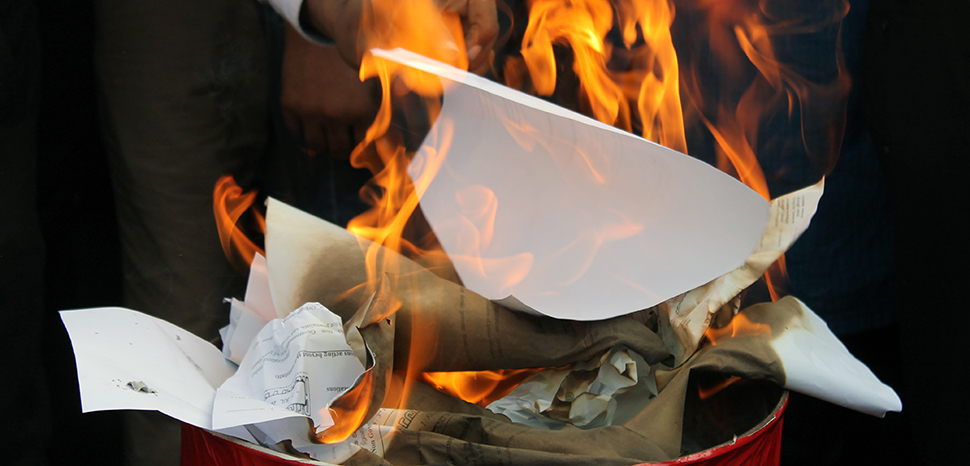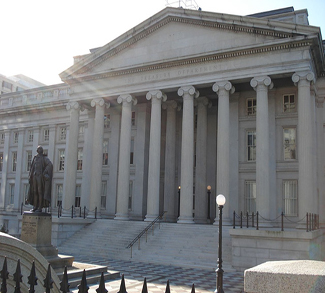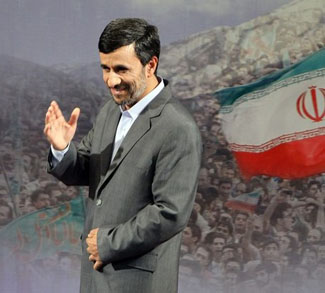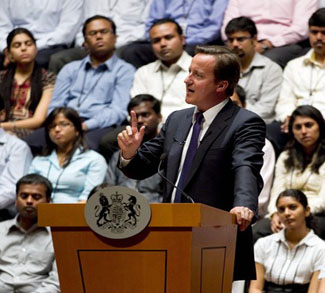Blatant corruption, unashamed nepotism, imperial-styled governance, extravagant but useless mega projects, reckless money borrowing, and dynastic dictatorship are some of the factors that may destroy any country. Sri Lanka, which is being projected nowadays as symbol of a bankruptcy and clumsiness due to the inept and corrupt leadership, is passing through perhaps the most difficult phase of its history because of all these factors. This island nation, which has one of the highest literacy rates in the world, is facing an extremely painful political and economic turmoil. Last week, finally, Ranil Wickremesinghe became the eighth executive president after defeating his opponents by a huge margin, but he has to tackle innumerable and colossal challenges to steer the country out of its current mire of despondency.
The Rajapaksa dynasty has finally crumbled against mounting public pressure and protests and the Rajapaksa family fled Sri Lanka, yet they have damaged the country – economically and politically – to the level where it will take enormous amounts of patience and sacrifice on the part of all citizens in order to put the country back on the right track. The Rajapaksa dynasty was established by Mahinda Rajapaksa in 2005 when he became the president. For the next one decade, Mahinda ruled Sri Lanka with iron fist – crushing civil liberties, augmenting presidential powers (including abolishing term limits) and making a series of bad deals with China. Throughout this period, he also worked to establish his family’s firm footings in the corridors of power; for example, by appointing his younger brother Gotabaya as defense secretary.
However, in 2015 Mahinda lost a presidential election, albeit by a narrow margin, and his clan was briefly thrown out of power. During this period, to Mahinda’s utter dismay, the parliament restored the presidential term limit, ruling out another Mahinda presidency in the future. Yet the Rajapaksa family was quick to find another way to restore their dynasty: Gotabaya would renounce his U.S. citizenship and contest for president. Gotabaya was well-positioned to win because of his prominent role in launching the final strike against the LTTE (the Liberation Tigers of Tamil Eelam) as defense secretary in 2009, when Mahinda ordered the final military offensive against the Tamil Tiger rebels, bringing a decisive closure to the brutal 26-year civil war. At that time, the Rajapaksa brothers projected themselves as the heroes of Sri Lanka’s Sinhalese majority. They cleverly brandished their ethno-nationalist credentials and presented themselves as hardheaded guardians of Sinhalese interests. This nationalist card enabled Gotabaya to win the 2019 election — at which point he immediately appointed Mahinda Rajapaksa as his prime minister. Mahinda then appointed his two sons, his other two brothers and a nephew as ministers or to other government positions. So, the Rajapaksas had almost taken charge of the country like a royal family. In addition to nourishing the existing ethnic and religious divisions in the country to strengthen his rule, Gotabaya copied his elder brother in establishing an imperial presidency and enhanced his presidential powers through constitutional amendment to dissolve the parliament at his whim. The economic death spiral initiated by his brother was further aggravated due to a number of illogical economic decisions and extravagant spending from the national exchequer, by erecting innumerable monumental but economically unviable and even insane projects across the country. These include a cricket stadium with more seats than the total population of the district and a $1.4 billion seaport that remained mostly idle until it was handed over to China in 2017 on a 99-year lease, but the most spendthrift projects are doubtlessly the $13-billion “Port City,” which is being raised on land reclaimed from the sea close to the center of Colombo, along with “the world’s emptiest” airport.
Sri Lanka’s economy had been in this death spiral for several years, in addition to accumulating high levels of external debt while having significant debt-servicing problems as far back as 2016, the country sought $1.5 billion in assistance from the International Monetary Fund (IMF) to address external account difficulties to cover the low foreign exchange reserves and capital outflows. The situation was further intensified thereafter, as the country saw commercial borrowings grow with skyrocketing speed, growing from a mere 2.5% of foreign debt in 2004 to 54% by 2019. Two years later, the government, in a highly ill-advised move to promote organic farming, banned the use of chemical fertilizers, which resulted in drastic decline of agricultural exports. Although the government was forced to reverse the decision regarding the ban on chemical fertilizers following industry backlash after just six months, the reversal came too late as much damage had already been caused to the economy. Sri Lanka – long self-sufficient in rice production – was compelled to import the crop while prices for the national staple hit the ceiling. Similarly, production, one of the tropical country’s top sources of foreign currency, was also badly hit by this silly ban. The flourishing tourism industry, remittances from the overseas Sri Lankans, and increased borrowing had reasonably neutralized the impact of a widening trade deficit. But this all ended when the COVID-19 pandemic savaged the Sri Lankan economic outlook in early 2020. Global travel restrictions dramatically reduced income from tourism industry, which had previously constituted almost 5% of GDP. This was followed by massive decline in remittances from overseas workers, while simultaneously, government expenditures were ramped up in an effort to tackle the pandemic.
To add insult to the already injured Sri Lankan economy, the cost of borrowing was also increased due to a continuous drop in the country’s credit rating. Economic problems were further heightened with fiscal deficits exceeding 10% of GDP for consecutive two years (2020-2021) and government debt climbing to 119% of GDP by 2021. The unabated deterioration of foreign exchange reserves, in spite of government’s suspension of foreign debt payments, and steep fall of Sri Lankan rupee against the US dollar catapulted the country into a massive economic turmoil, which eventually led to public uprising. More recently, the war in Ukraine, by triggering excruciating international energy and food prices, drained Sri Lanka’s foreign reserves to the bottom and forced the then PM Ranil Wickremesinghe to declare the country’s default status, creating panic and widespread fuel, food, medicine, and electricity shortages. It was the final straw for many Sri Lankans, who took to the streets in droves against the Rajapaksa dynasty. The anger of the people of this island-nation was justifiable. The country had run out of fuel long before the literal announcement from Prime Minister Ranil Wickremesinghe that the country was bankrupt and had no more money to import gasoline. Photos of the Aragalaya street protestors lounging in the president’s bedroom, swimming in the pool, and cooking in the backyard of the presidential mansion have certainly created a new symbol of people’s power across the globe. The Rajapaksas had literally played havoc with the constitutional structure just to grab more and more powers and prolong their stay at the helm, just like a royal family. Sri Lankans had been ignoring the misuse of power by them, but the declaration of the bankruptcy status was the tipping point that encouraged the people to finally drag the Rajapaksa brothers out of their palaces.
The ascension of Ranil Wickremesinghe to the presidency will at least, though temporarily, give some respite to the existing political uncertainty. All parties in parliament which had been demanding the resignation of PM Ranil Wickremesinghe and President Gotabaya Rajapaksa actually voted for Ranil in the presidential contest. So President Ranil, who has been vying for this coveted post throughout his political career but had almost lost hope of ever becoming president, now has a chance to regain some semblance of stability in the remaining one-and-a-half years of the presidential term. It is also a golden opportunity for him to win the next elections provided he is able to stabilize the economy in the face of apparently unresolvable challenges. Ranil Wickremesinghe, who has been officially aspiring to become president since 2005, is the first one to be selected by parliament against the opinion of mainstream nation-wide polls. He has to tread very carefully now. Obviously, for the IMF and the international community to help Sri Lanka, there has to be political stability and also a secure environment for tourist arrivals and massive foreign investments in multiple sectors. The Indian Ocean country has been grappling for months with double-digit inflation, widespread power cuts, and acute shortages in fuel, medicines, and food. The situation is so grim and serious that the United Nations’ World Food Program said in June that nearly 5 million people – or 22% of the population – are already food insecure and in need of assistance Sri Lanka will remain in a severe macroeconomic crisis until it can get external financing assistance from either multilateral or bilateral sources to bolster its foreign exchange reserves. As per some economists, the country needs an estimated $6 billion through the end of the year to buy fuel and other essential goods such as food and fertilizers. To achieve all this, President Ranil will be faced with tough decisions, which may be politically unpopular for him; but he can’t escape them. The IMF won’t provide further relief without tough pre-conditionalities including far-reaching tax reforms to boost fiscal revenues and minimize the fiscal deficit as well as assurances from external creditors about how to restore external debt sustainability. President Ranil has to maintain closer and cordial relations with Beijing, which accounts for over 20% of the country’s external debt, while trying to push for greater share of losses on to private bondholders – an experiment that was accomplished by some African countries, but one that is fraught with risk of disorderly defaults and prolonged legal battles. Nonetheless, a big mess is waiting for Ranil. At the same time, it is also an opportunity for him to prolong his stay as president, his lifetime dream, by steering his country out of this turmoil.
The views expressed in this article belong to the authors alone and do not necessarily reflect those of Geopoliticalmonitor.com




